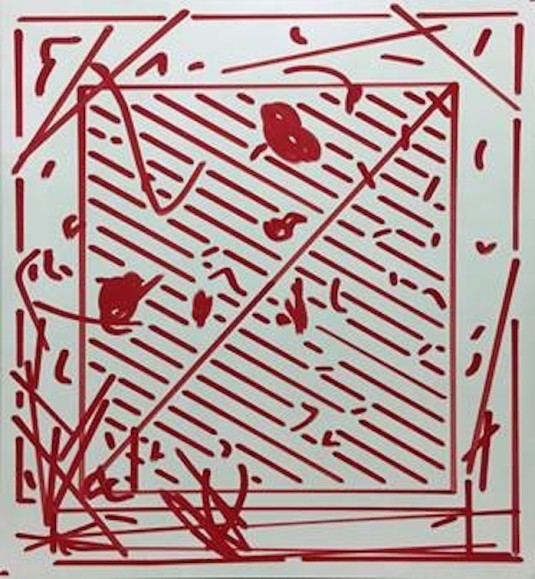Frictionless painting (social colour)
Frictionless painting (social colour)
-
Artist
-
Production Date
2003
-
Medium
oil on linen, 12 inch Apple G4 PowerBook, video (single channel, standard definition, 4:3, colour, silent)
-
Size
46min 16sec
-
Credit
Chartwell Collection, Auckland Art Gallery Toi o Tāmaki, 2003
-
Accession Number
C2003/1/10
-
Accession Date
28 May 2003
-
Department
New Zealand Art
-
Classification
Installation
-
Collection
Chartwell
-
Subjects
painting (image-making), laptop computers, machines, cubes, squares (geometric figures), geometric patterns, color printing, colours, four-color process, ready-mades, digital images, social issues
-
Description
Simon Ingram complicates the commonplace idea of painting as a direct expressive act. He uses computers and painting machines in designing and executing his paintings, distancing himself from the old romantic idea of the painter in his studio, passionate intensity, the smell of turps. Frictionless Painting, a two-part work, uses cyan, magenta and yellow, the "process colours" used in offset printing but rarely in art. We don't think of them as natural colours - colours of things in the world - even though they are used to reproduce them. Ingram calls them "social colour". Part one, Space Painting #9, looks like a massive enlargement of a moiré pattern. Ingram used a computer 3d rendering programme to make patterns of tilted squares, softening their edges using a "watercolour" effect (computers can be "sensitive"). He then had a painting machine - a computer controlled airbrush - spit out the patterns in magenta on a yellow canvas. He overlaid two variations on the pattern in successive passes, suggesting patches existing on two distinct planes. Part two, Monochrome in C, a diptych, juxtaposes a nondescript cyan monochrome against a G4 Apple powerbook screening a video of it being made by the painting machine. The painting is a small thing, yet suggests a sublime transcendent beyond. Maybe its metaphysical implication is downplayed when you see a machine generate it, maybe not. (Snake Oil, 2005)
















